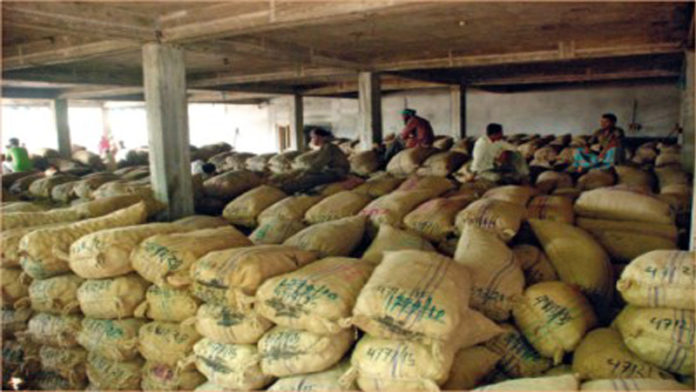RAJSHAHI, March 8, 2018 (BSS)-Natural cold storage is an effective means of long-term preservation of vegetables and some other seasonal fruits and green spices like garlic and green chili in an organic way and its prospect is very much bright in the agro-based area.
An environment-friendly cold storage with 300 tonnes capacity was launched in Bhadra area in Rajshahi city for the first time in Bangladesh in December, 2014 at a cost of around Taka 14 lakh.
Its performance is very much optimistic, said Prof Dr Monzur Hossain, director of the natural cold storage project.
During the trial period since July 2016, potato, onion, ginger, carrot, tomato, mango and other vegetables were conserved in the cold storage.
“We have found good results for potato, onion and ginger preservation. Potatoes and onions were preserved for four months,” says Prof Hossain.
Another Taka 20-lakh new research project was adopted in order to preserve tomato, carrot, mango and some other fruits side by side with the leafy vegetables for three to six months without using any chemicals.
Prof Monzur Hossain, Director of Institute of Biological Science in Rajshahi University, said the cold storage has been designed to facilitate the grassroots level farmers in Bangladesh.
He said no electricity is required to run this cold storage. Instead the natural storage will preserve the agricultural produce through the process of vaporisation.
To help the farmers preserve perishable items such as potato, tomato, onion, and ginger at cheaper rates, the natural cold storage which uses green technology has been set up at Namo Bhadra area in Rajshahi city.
The facility was set up by using local ingredients. As this was the first ever such facility in Bangladesh ‘we conducted extensive experiments to find its effectiveness as well as limitations,’ says Prof Monzur Hossain illustrating salient features of the venture.
The 60 feet long and 30 feet wide rectangular storage is made of bricks, cement, bamboo, and shaan that can house 300 tonnes of produce.
The vital part of the storage is the two parallel walls. The inner wall is made of brick and cement and the outer wall is constructed with concrete blocks and bricks. The gap between the two walls is three inches that is filled with sand.
To allow sunlight inside the storage, there are two windows made of glass in the upper part of the storage. Four solar panels of 110 watt have also been set up to generate electricity to light the storage.
We become successful to keep the temperature inside the storage within 26 degrees centigrade which is convenient for keeping potatoes and onions cool, Prof Hossain added.
Temperature below 16 degrees is needed for preserving vegetables and fruits. “We are now planning to set up another small storage for further experiment on other vegetables and fruits,” he further said.



